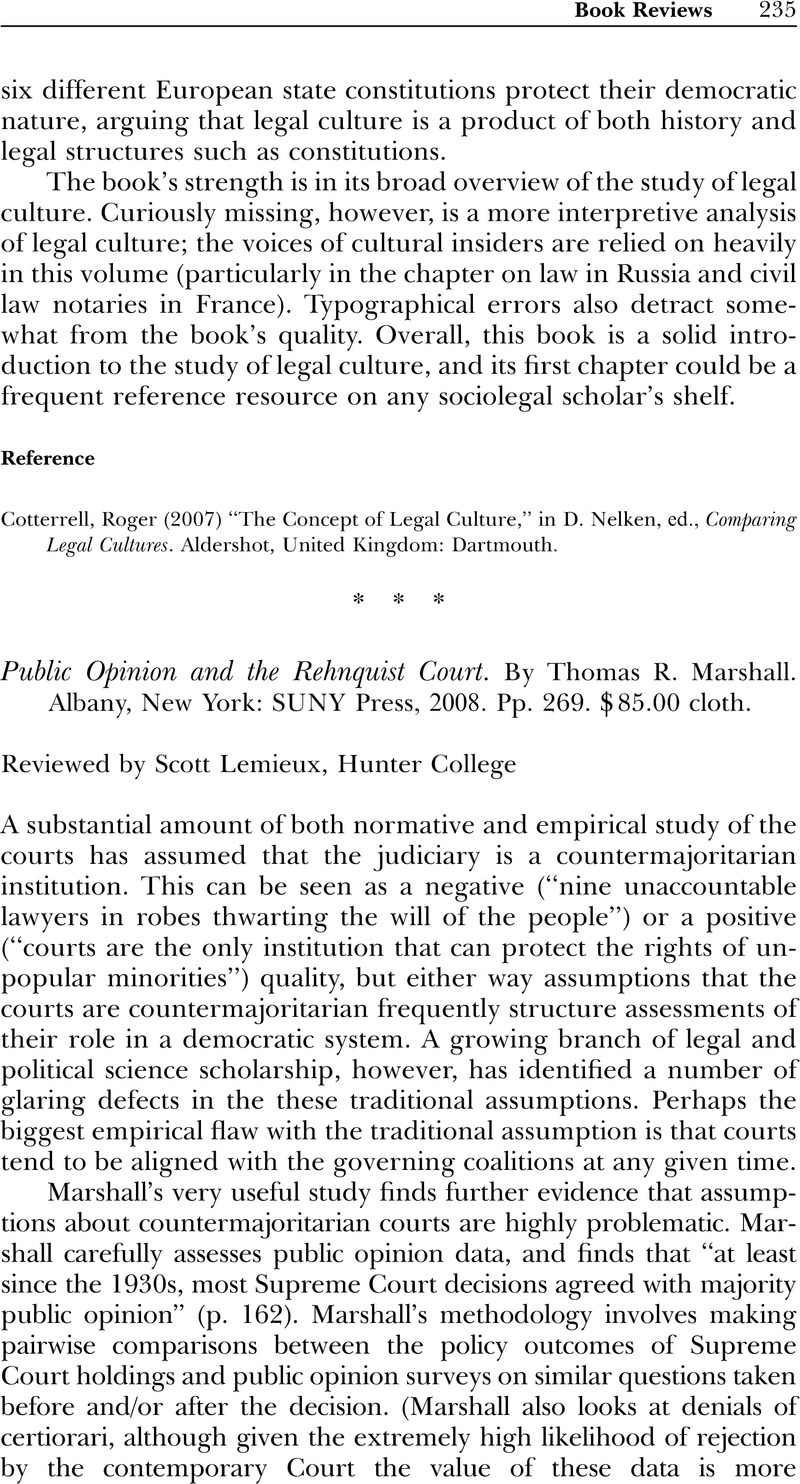No CrossRef data available.
Article contents
Public Opinion and the Rehnquist Court. By Thomas R. Marshall Albany, New York: SUNY Press, 2008. Pp. 269. $85.00 cloth.
Review products
Public Opinion and the Rehnquist Court. By Thomas R. Marshall Albany, New York: SUNY Press, 2008. Pp. 269. $85.00 cloth.
Published online by Cambridge University Press: 01 January 2024
Abstract
An abstract is not available for this content so a preview has been provided. Please use the Get access link above for information on how to access this content.

Information
- Type
- Book Reviews
- Information
- Copyright
- © 2009 Law and Society Association.

